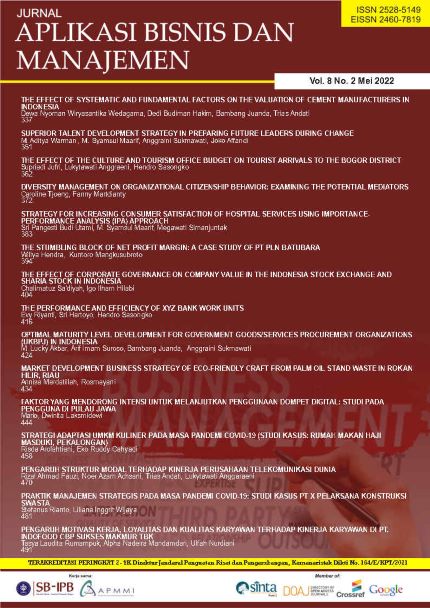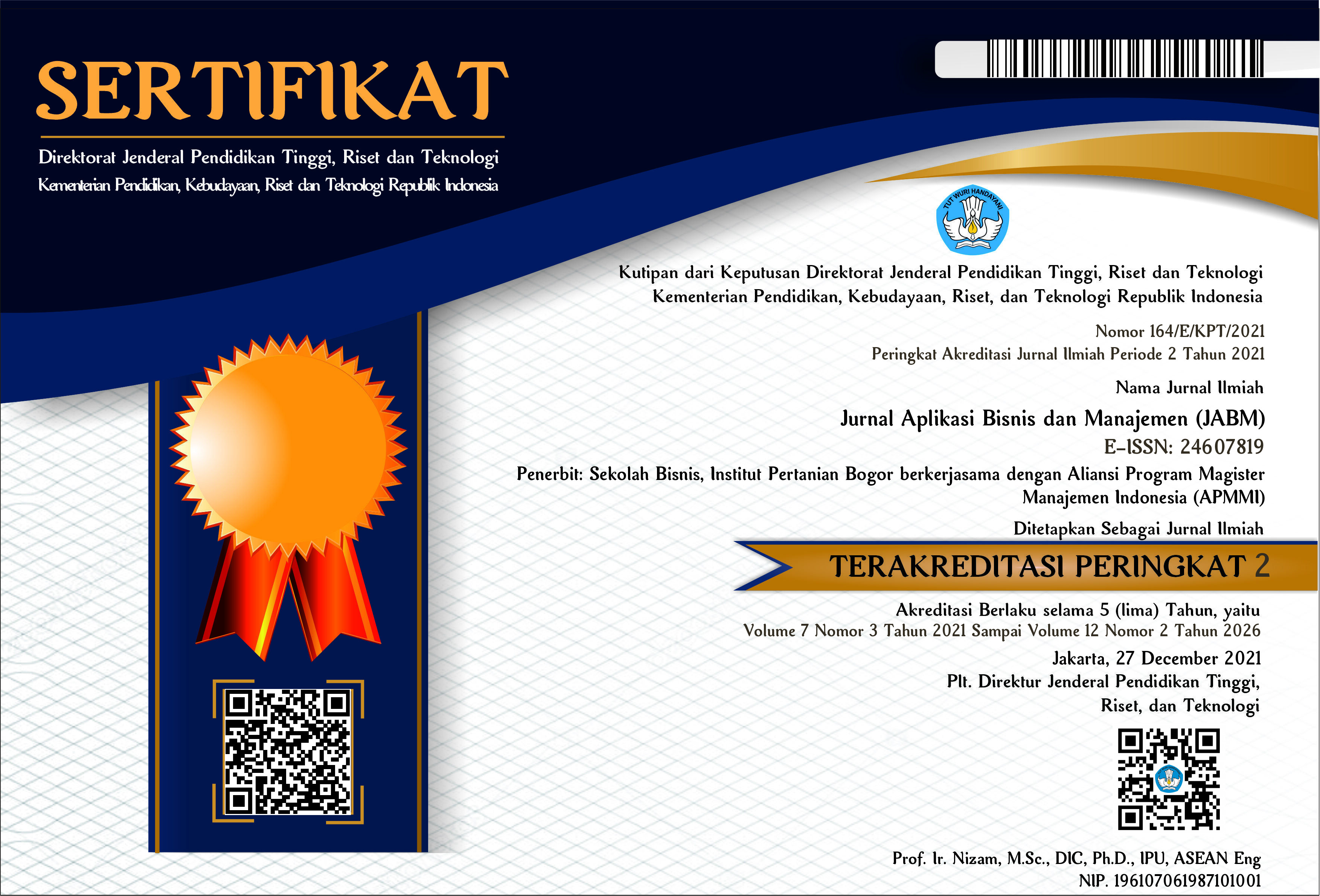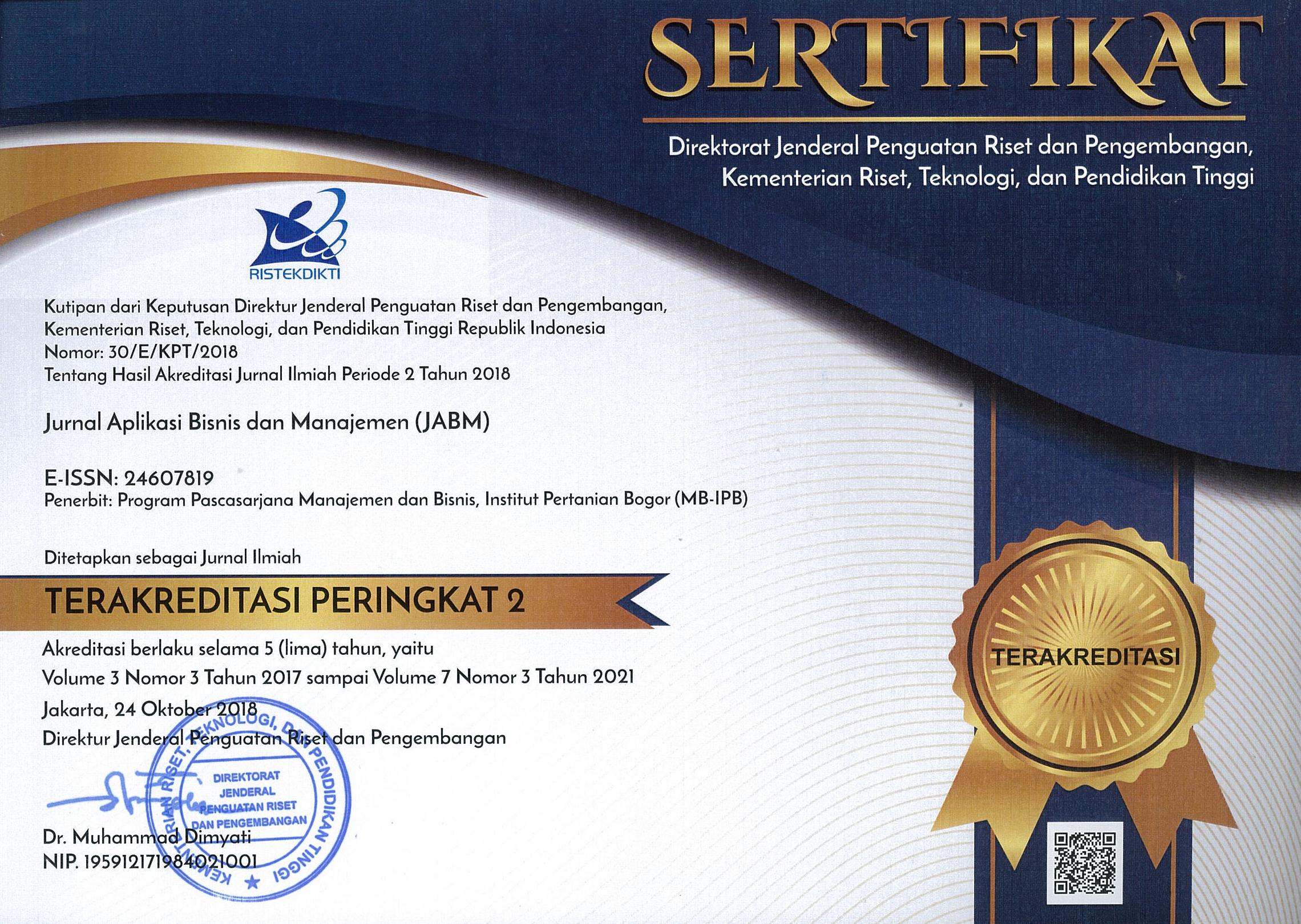Dampak Fenomena PSBB Kepada Perkembangan Strategi Pemasaran Pada Perusahaan Rintisan Agribisnis (Studi Kasus: PT XYZ)
Abstract
Large-scale social restrictions (PSBB) are activities that limit the scope of buying and selling. PT XYZ can take advantage of this opportunity to acquire new customers. The high level of complaints can be the basis for improving the company's marketing strategy. This study aimed to identification factor-factor internal and external which can affect marketing XYZ, strategize and managerial implication for alternative strategy which been chosen. This research was conducted at PT XYZ for one month from the end of October 2020 to November 2020. The research method used was descriptive qualitative method with a case study approach to the research object. Sampling was determined purposively (purposive sampling). The analysis carried out was an analysis of internal and external environmental factors then analyzed using SWOT. The results of the study are factors that affect the internal logistics environment and external environmental factors are the bargaining power of suppliers and the threat of new entrants being important, Acquisition of partners and conducting incentive activities. Develop business with SO and ST strategy. This strategy is expected to be able to increase PT XYZ's consumers and simultaneously improve cooperative relationships with farmers.
Keywords: COVID-19, external analysis, internal analysis, market penetration, SWOT analysis








